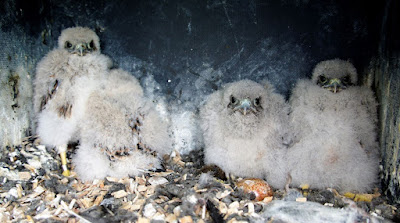Visits to the Sand Martin colony must coincide with zero or gentle winds from the east or south east. Anything else is a no-no when a billowing mist net becomes visible to keen eyed Sand Martins able to pick out an insect from many yards away and then unerringly catch the insect in flight. Our visits must also be in the cool of early morning and before the sun travels west and makes a mist net visible.
Our third visit of the season and a perfect forecast made us pencil in Tuesday. I met Andy at 0615 to a temperature of 20°, pretty normal for a real British summer rather than the wet and windy ones of recent years.
Two earlier visits on 4 June and then 30 June saw 119 Sand Martins caught-103 adults and 16 juveniles of the year. We still await details of one of the adults caught on 4 June that bore “Paris Museum” 8911708.
It’s never easy to come up with a Sand Martin count when so many are in the air, a good number feeding over the nearby water and others toing and froing at the nest tunnels where poking out heads add to the counting difficulties. Our best guesstimate was 180/200 individuals throughout two hours of watching while working at ringing.
The count was probably fairly accurate with a catch of 65 Sand Martins being a healthy proportion of those around. The 65 comprised 37 juveniles of the year, 17 new adults and 11 adult recaptures, the eleven recaptures all from 2021 or 2022.
Today’s figures, especially of juveniles, suggest that the Sand Martins here are having a pretty good year following a couple of poor years caused by wet summers, failed broods and the birds’ early departure for Africa.
Sand Martin - juvenile/first summer
As an afterthought, here in the UK the two day heatwave green hysteria doom and gloom is out of control. It has become comical and ridiculous by confusing climate with patterns of meteorological conditions that have been with us for the last 15 billion years.
In the 14th and 15th centuries ‘unnatural climatic phenomena’ were often blamed on ‘a great conspiracy of witches’. During the Little Ice Age in particular, when crops failed in many parts of Europe, there was a frenzy of witch-hunting. Some in society held witches directly responsible for the high frequency of climatic anomalies.
This sounds all too familiar, like current attempts to pin the blame for weird weather of any sort on today’s witches - coal-mining, cows or motorists.
Everyone needs to calm down and cool off. We’re safer from weather than we have ever been. It’s the ever increasing numbers of “experts” we should be afraid of.
Other birds this morning comprised 1 Swallow, 4 Common Tern, 2 Grey Heron, 2 Oystercatcher, 2 Pied Wagtail
I worked hard this morning doing real Citizen Science. Now it’s sunny and warm. I’m off to sit in the garden with an ice-cream and dream of holidays in Hot and Sunny Skiathos - nine weeks and counting.
Linking today to Eileen's Saturday and Anni in Texas.












%20(1).jpg)












































.jpg)












